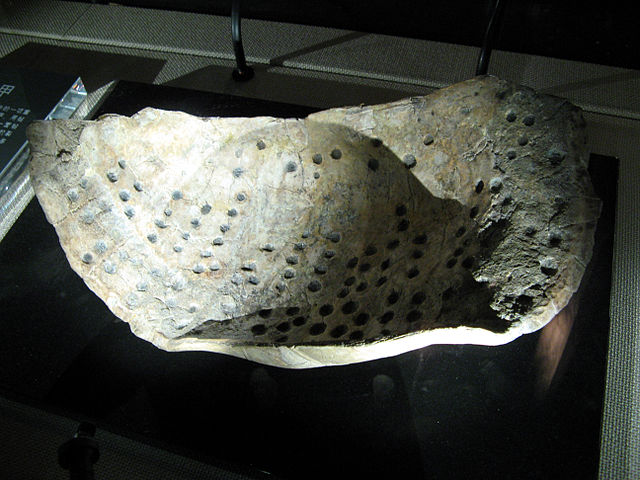
Tortoise Shell For Divination
Jinsha Museum, Chengdu

|
Tortoise Shell For DivinationJinsha Museum, Chengdu |
Shang oracle bone divination used the shoulder blade of an ox, or alternatively the breastplate (plastron) of a tortoise, to ask the ancestors if a proposed course of action would be successful. The bone was prepared by writing a question on one side ("if I do X, will Y happen?" – Y being the desired outcome) and drilling pits into the other side. The diviner applied a hot pin or other heat source to these pits, and interpreted the answer (we do not know exactly how) from the resulting pattern of cracks that appeared on the inscribed side. The answer ("favorable/unfavorable"), and sometimes also the actual outcome ("Y happened/didn't happen"), was then added to the original inscription.
The diviners may have tried to obtain favorable answers by repeating the question several times in different ways, carefully arranging the pattern of pits, and so on, indicating that this form of divination also included a petitionary aspect; the ultimate purpose was to obtain a good outcome, not just to find out in some abstract way what would happen.
At Jinsha, the tortoise shell carapace (back part) rather than the plastron was used. Another difference is that the Jinsha shells are not inscribed. Keeping in mind that Jinsha was not part of the Shang culture, such differences can perhaps be explained by incomplete borrowing; indeed, no writing has been found in the Sanxingdui culture to which Jinsha belonged.

|

| 
|